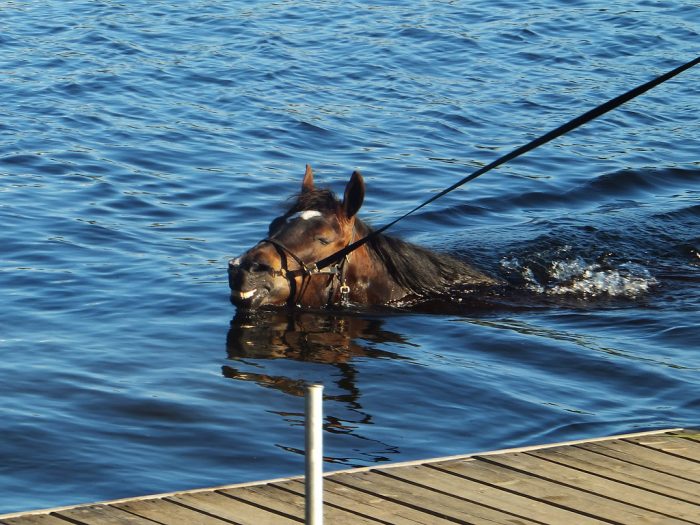Modern humans are aware of the fact that swimming is very beneficial for their bodies — even in the midst of winter, we like to visit indoor pools. Apart from helping us relax, swimming improves our fitness, builds muscles, etc. So it is no wonder that both pet owners and animal trainers started thinking about incorporating swimming into their animals’ workout routine.
In fact, most racehorse trainers believe that swimming is one of the best workouts for horses because it provides them with a good training session that helps build overall muscle strength and stamina. In addition, swimming helps horses develop healthy lungs.
If you like horse racing, you should learn more about Cheltenham — one of the most significant horse racing events in the world. So if you are thinking about placing a bet on your favourite horse in Betway, make sure to learn more about the Cheltenham first.
Swimming as a Workout

While taking your dog to the beach and letting it swim a bit has been a thing for quite some time, most dog owners don’t actually do that to improve their dog’s fitness or muscles — they are doing it for the sheer fun of it. However, for animals that compete, especially horses, trainers and breeders recommend pool training.
It is a widely accepted fact that swimming increases fitness in horses, but there are some points to be considered. Swimming is good for horses’ muscles, joints, endurance, and it can help a lot with injuries. On top of that, exercises in water reduce stress on the limbs and joints by reducing the weight of the horse.
However, horses’ breathing changes when they are swimming, dropping to just 25-30 BPM compared to 120 BPMs when they are running at a full gallop. Upon exiting the water, their breaths/min increases immediately to 150, which means there is a lot of stress on the respiratory system. Therefore, most trainers do not train horses which have respiratory or wind issues in water.
Trainers are struggling to implement some form of training standardisation to horses’ workout since their swimming techniques and abilities are highly individual. Currently, many believe that swimming is best used as an additional exercise to track training.
That is because the movement is completely different in the water. Muscles which have to move the legs upwards need to work much harder to overcome traction and drag while muscles which act to decelerate the motion (used particularly during gallop) have almost no activity in the water.
There Are some Doubts

While many people practise and advertise swimming for horses, some more recent studies which monitored the results of dozens of thoroughbreds and their swimming training found no correlation between performance rating and training sessions. Also, the heart rate, BPM, and speed weren’t affected whatsoever by training sessions. Still, there are no definitive results.
Considering how popular horse racing is and how much money is involved in the sport, it is certain that more extensive studies will be conducted to determine the impact of swimming on racehorses’ performance. For now, it will remain a practice among horse trainers.

